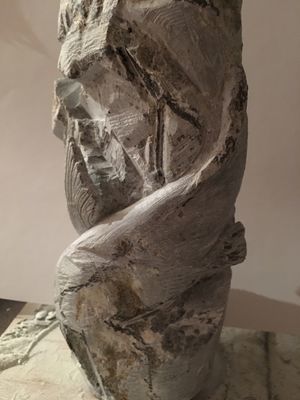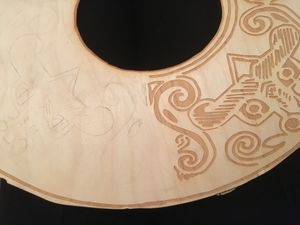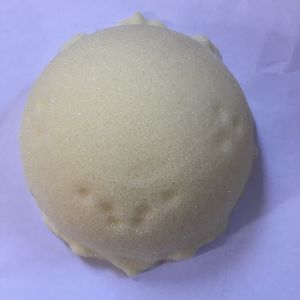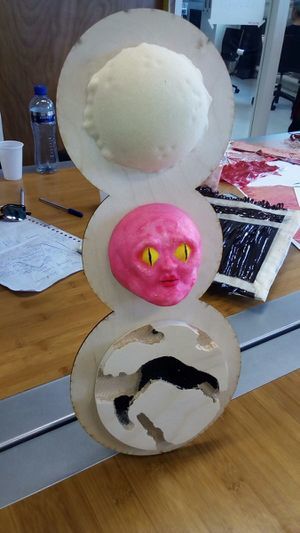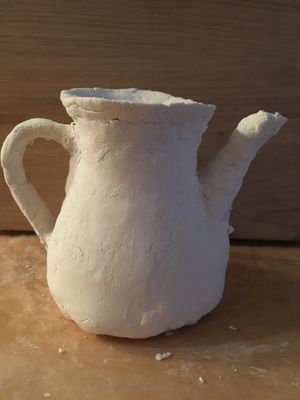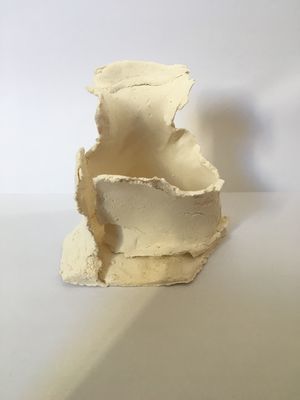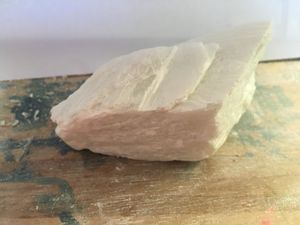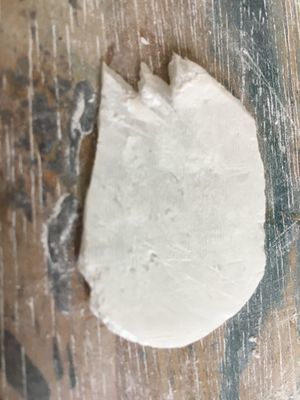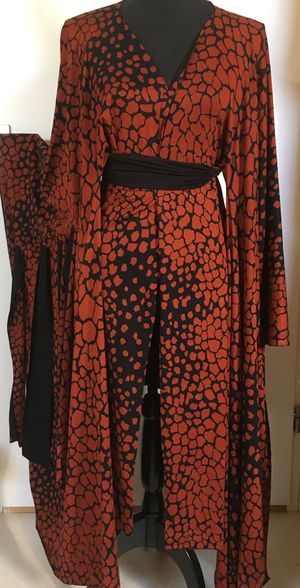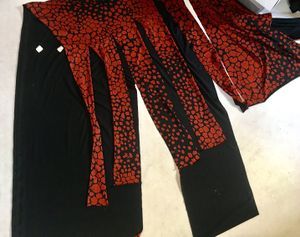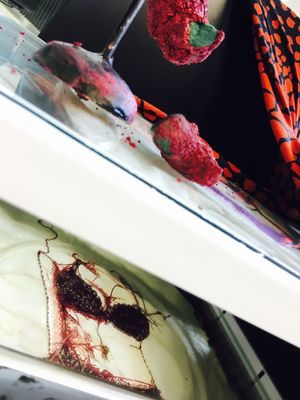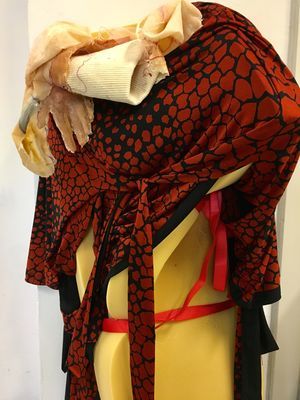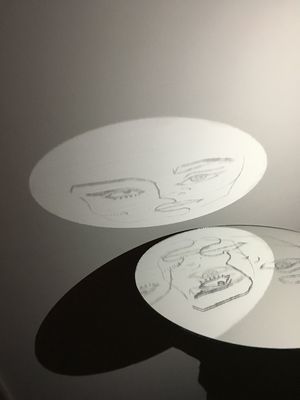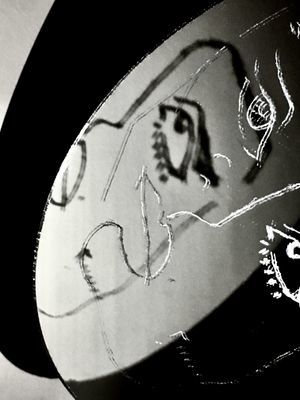Difference between revisions of "User:CFErmers"
| Line 52: | Line 52: | ||
===='''Comparative Example'''==== | ===='''Comparative Example'''==== | ||
| − | ::::''Still in Chinese cultures I took another example. This time I want the pupils to make a simple change to bring the artefact closer to their own culture. Before globalisation (jadeite) sandstone was not that easy to get. So I replaced the material with wood. | + | |
| − | + | [[file:Comparativedisk.jpg|thumb|300px]] | |
| − | ::::These disks were in two types Bi (heaven) and Cong (earth). The earliest were produces in the Neolithic Period (3400-2250 BCE). Their exact function and meaning are still unknown but some cosmologic links have been found. They have been found in burials the Bi guiding the soul to the afterlife and the Cong to connect the body to the earth.'' | + | '' |
| + | ::::''Still in Chinese cultures I took another example. This time I want the pupils to make a simple change to bring the artefact closer to their own culture. Before globalisation (jadeite) sandstone was not that easy to get. So I replaced the material with wood. And carved them using hand tools and the lasercutter. | ||
| + | ::::''These disks were in two types Bi (heaven) and Cong (earth). The earliest were produces in the Neolithic Period (3400-2250 BCE). Their exact function and meaning are still unknown but some cosmologic links have been found. They have been found in burials the Bi guiding the soul to the afterlife and the Cong to connect the body to the earth.'''''' | ||
====''''Shared Example''''==== | ====''''Shared Example''''==== | ||
Revision as of 19:54, 2 April 2017
Hello there, thank you for visiting my wiki page.
Why? Am I A Maker?
My name is Chiara, and I am a second year’s student of the fulltime Fine Arts & Design teacher training. Although I can create my own balance between being an autonomous artist and an educator in the arts, I surely see myself in the future as an educator, part-time at least.
So I am not only a maker, but also an educator, teaching other makers to make. So what defines being an educator? And what roots does this role have in my personal urge to create?
Keeping in mind that my internship next year will be in a high school, meaning I have to embody this role in the near future. That is why I placed myself in this teaching context. A teacher, in my personal opinion, is someone who guides a pupil through his/her development, not lead. Leading means you take place in this developing process, and thus sometimes unconsciously blocking the pupil’s path. To make learning most efficiently I think a link between art theory and craft is a necessity. That is why I create my own courses.
‘I make to teach.’
CARVING
- Taking the history of carving as a starting point I came to a following conclusions:
- - Carvings are to be found everywhere.
- - “Carving was first used to make carving tools” Smashing a hard stone against a softer one created the first sharp objects to make carving easier. (This conclusion made me decide that stone was my historic material.)
Carving and a classroom in a big city have one thing in common. It has a wide range of cultural diversity. In my experience positive group dynamics start to collapse in creative subjects.
Especially here in the west, after the industrial revolution, mass production is to be found everywhere. Making is no longer a necessity. If you need a chair you can buy one that is cheaply produced by a machine (in China). In today’s times it is about wanting to create, wanting something elitist.
That being said, if we only make because we want to, then again: Why is it that pupils segregate in these creative classes? My hypothesis is that it is because the creative subjects are more linked to identity than a strange language or mathematics will ever be. It is about self-expression. Don’t we, makers, all create to express our thoughts, opinions and feelings, to satisfy our internal urges? I know I do.
‘I make to identify.’
And that is exactly the problem. Teens in the middle of puberty are still wandering around, trying to find out who they are, what they relate to, not being sure about their identity. So they crawl back to what is known. That can be quite challenging, the more reason for me to focus more on social and group dynamic goals, rather than creative quality of the made artefact.
‘I make to unite’
Historic Example
- If knowledge is power, why do we not teach each other about our cultures? That is my goal.
- Currently not being in a classroom setting I threw a dart on a world map, which landed on China. For a classroom there are infinite didactic forms to work towards this goal. You can let the pupils bring recourses (pictures or even objects) from ancient carvings from their own culture. Then they each pick a, for them, appealing carving which will be their inspiration. They have to cooperate for background information or if they pick their own they can give a small presentation.
- Koi Fish carved in sandstone. A koi fish stands for: Good Fortune, Succes, Prosperity, Longevity, Courage, Ambition and Perseverance. There is also a legend of the dragon gate. Once a koi fish swam upstream through waterfalls to reach the top of the mountain where the Dragon Gate was located. There he turned into a dragon.
- Fun fact: A white koi fish with only a red dot on his head is worth millions of dollars.
- A little cru fact: In some Chinese subcultures it is believed that eating a koi fish will give you all of the above, the more raw or alive the fish, the better.
Comparative Example
- Still in Chinese cultures I took another example. This time I want the pupils to make a simple change to bring the artefact closer to their own culture. Before globalisation (jadeite) sandstone was not that easy to get. So I replaced the material with wood. And carved them using hand tools and the lasercutter.
- These disks were in two types Bi (heaven) and Cong (earth). The earliest were produces in the Neolithic Period (3400-2250 BCE). Their exact function and meaning are still unknown but some cosmologic links have been found. They have been found in burials the Bi guiding the soul to the afterlife and the Cong to connect the body to the earth.'
- Astrology did and still does play a huge role in the Chinese culture. A lot of beliefs and rituals are linked to it. The Chinese have a yearsign. There are twelve animals in the chain: The rat, tiger, dragon, horse, monkey, dog, ox, rabbit, snake, goat, rooster and pig. The even years are Yin the uneven years Yang. To make another step closer to my identity I chose to create my western sign: Taurus.
Material pushed to the limit
- I have not yet carved by mold making so I decided to do something with ceramics. Talking about creating a connection, one of the most universal products in the world: tea. Why not make a teapot. A teapot with walls as thin as possible to hold water. The initial idea was to carve a globe on the super thin walls of the pot. But fate had it I really pushed it a little too far to the limit, when adding water. The walls were apparently too thin
I also tried to create a trompe l'oeil. I wanted a piece of jadeite to look like a piece of paper. However to make it this thin was only made only possible for a few millimeters.
Focussing on creating lessons using craft to reach social learning purposes I see a clear difference between these objects m in comparison with my own autonomous work. As I said before I want to be a part time teacher but also part time an autonomous artist. Because when I have to set an example on the pupil’s level, it will not ever be an expression of me. Wasn’t that the purpose of the series? Yes, but I am the teacher, I am not part of their process I simply guide. If a teacher is to make a work that is truly on his/her own level the gap between that of its’ students would be too large for them to develop.
So why am I an autonomous maker? When I create things it always has a new try out experiment. For me making is learning. Learning about a subject and it matters. And I like to take my time to explore new techniques, experiment and combine them with what for me is known. When I make something it is a good opportunity to broaden your horizons. I make to learn. Not only in terms of craft but also in terms of theory. For example, when I came across Human Behaviour from Bjork the first time, I rolled into a study and from there I read Klimt and Nietzsche, to learn more about anthroposophy. Which finally formed this work: Foto In other words: Identification means inspiration. And inspiration leads to curiosity, curiosity leads to associations, associations lead to study, and study leads to (self)reflection and (self)reflection brings us finally to identification. This cycle is called exploring.
‘I make to learn'
New Skill Try Out
- As I like to learn through making, and almost always add something new. I had to think about something I never used in certain context before. And there it is, although I have always been interested in Fashion, I never did anything further than admiring designers and looking up patterns. Yes I have sewn in my life (to repair my favourite jeans f.e.), but not in a clothing-designing context. Besides sewing is not carving, that means just cutting/ripping. I have seen carved joints in wood, so I decided that making a joint in fabric should be possible too somehow.
As you may have noticed I am not using the words ‘I am a maker.’ Although I talked a lot about identifying yourself within craft, but what I make is not my identity. It is rather an expression; it is a part of me. I will never introduce myself as ‘Teapot pushed too far over it’s limits’ to a stranger, or immediately showing some of my work. I see creating as a deeper level of understanding yourself, another, your position, someonelse’s position and the world.
Inspiration comes any time unexpected; this can be a gut feeling, politic matters, an experience or an inspiring perception (and much more). When my attention is drawn to something, I want to satisfy my curiosity. I want to truly understand where this inspiration comes from, then learn about it step by step from more than one perspective. Then I can objectively argument my feelings/opinions about it. And as final step expressing them, let my craft explain them. The closer you can identify yourself with that inspiration, the more self-explanatory/straightforward this process is. Should my work be as self-explanatory as some sort of universal language than? No, because if there was only room for my personal perception, what kind of teacher would I be… a very bad one.
‘I make to explain’
""Final Exposition""
These objects had not only the same color palette, but also have something human. Where the foam and the latex dress embody the role of a torso with their pale color and their upright position, the kimono stresses humanity because the entire human race dresses up. The other three combined together tell me a same sort of story but rather about embracing an feminine side. Ofcourse this is pointed out by the woman figure but also with the associated colors.
I am not a maker, I am an explorer
I make to learn I make to explain I make to teach I make to identify I make to unite
And not necessarily in that order Am I not a maker I am an explorer
Final Artefact
- I make to teach: Look in the mirror!
- I make to learn: What do you/I see?
- I make to identify: Oh hey, that is I!
- I make to explain: I see a human face; two eyes are staring at me.
- I make to unite: Two eyes, a nose and lips it’s a human face: I am the same as thye.
